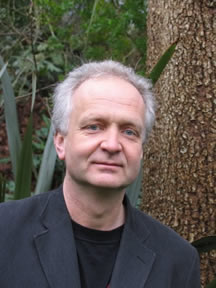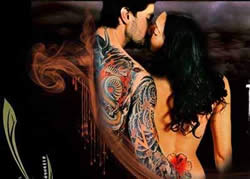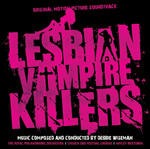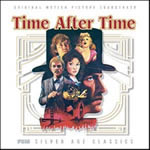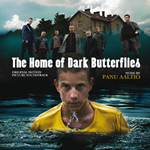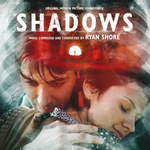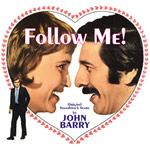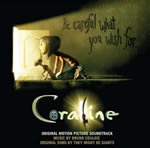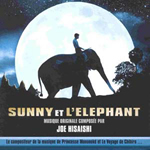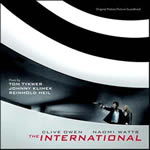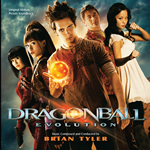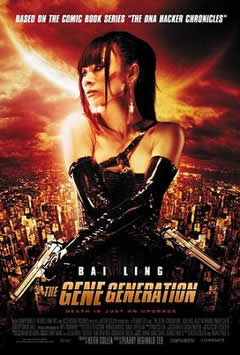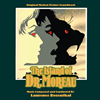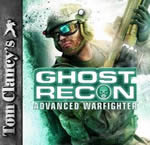 |
Soundtrax: Episode 2009-3
February 25th, 2009By Randall D. Larson
Peter Scholes Tapping Into Horror:
Peter Scholes and The TattooistThe Tattooist is a fascinating film with a unique approach to cinematic horror. The 2007 film, from New Zealand director Peter Burger, has to do with a young American tattoo artist (Jason Behr) who unknowingly plays a role in releasing a deadly spirit as he attempts to learn tatau, the Samoan tradition of tattooing. He becomes involved with Sina (Mia Blake), daughter of a local minister who distrusts the American, and also becomes associates with a family shamed by their missing son Lomi’s inability to complete his spiritual p’ea by finishing his ritual tattooing, all of whom seem to figure in a series of bizarre murders in which Jake’s tattoos unaccountably spread throughout the recipient’s body and suffocate them with ink.
Released on DVD last August, The Tattooist has a way of imprinting itself on the viewer not unlike the intricate patterns speckled into the skin of the contemporary Samoan people who are central to the film. It envelops itself with Samoan culture and develops a very interesting ghost story out of that culture and the spiritual aspects of Samoan tattoo. Taking place in the tattoo parlors of Auckland, New Zealand, the film makes the most of its clash of cultures. It is very well performed and directed, and is very interesting in its use of, for American and European audiences at least, an unfamiliar cultural mythology as well as in the way its story plays out. One of the standout elements is the film score by New Zealand composer Peter Scholes, who maintains an effective musical sound design, incorporating found sound as well as music derived from Samoan traditions to create a splendid sense of unease and also provide a recurring ostinato of horror throughout the film.
The haunting reverberation of the tapping tattoo instrument (which consists of a sharp wooden cutting tool or needle inked on one end with a piece of tortoiseshell bound at right angles at one end; the needle is lightly tapped with a wooden mallet to make its impression in the skin) resonates throughout The Tattooist, lending it a unique sonic texture and creating an atmosphere with evokes apprehension and fear; even when the tattoo spirit is not physically on scene, its presence is evoked by the light tapping sound, which becomes quite discomforting as the film goes on.
Scholes was born in 1957 in Auckland and grew up in the thermally turbulent area of Rotorua, New Zealand. His high school experience was as a border at Auckland Grammar and then he specialized in clarinet study at the Auckland Conservatorium of Music. He now pursues the dual career of performing (both as a conductor and a clarinettist), and composing, with numerous commissions by many New Zealand orchestras. His composition “Islands II” represented New Zealand in the 1993 UNESCO International Rostrum of Composers. He added film composition to his repertoire in 1993 with the drama film, Desperate Remedies for directors Stewart Main and Peter Wells. A handful of scores followed in amongst an extensive schedule performing and composing concert material. The Tattooist was his most recent and perhaps most evocative film score.
Interviewed late last Summer as the DVD was making its rounds, Scholes described his involvement in and approach to this highly unusual score.
Q: How did you get the assignment to score The Tattooist? I don't believe you've worked with director Peter Burger before?
Peter Scholes: The director and producer were looking for a composer who could meet the musical requirements of a supernatural/ thriller. I was asked to make a short example and hey presto I got the gig. I used the sound of the tattoo tool, both its natural sound and also with processing and layering to create new textures. My extensive work with orchestras and contemporary ensembles also gave me a strong basis on which to build my score.
Q: Coming into the project, what did you determine should be central, musically, to the score and how did you develop that idea into the ensuing composition?
Peter Scholes: Central to the score is the idea of a sound world in which there is a sense of being lost, (“out of your depth”) and in a world you don’t understand. Also the film keeps the identity of the “bad guy” a mystery so it was important for the music to build and set up his eventual appearance. There were a number of ways that I worked to achieve this. I chose to use an unconventional orchestration utilizing a mix of samples, real sounds, synthetic sounds and processed real sounds. Sound material which would appear disguised and balanced in unorthodox ways. I sampled the sound of the conch and then used it melodically (see Sina at the tattoo convention), French horn chords played live are pitch shifted up (a very tense sound), and the tattoo tool was a fertile source of sound material. This then moved into other areas of the orchestration where I employed very quiet sounds but boosted their levels and made them compete with other loud sounds. I immersed myself in trying to get a score which would claw its way into the world of spirits (dare I say “into the twilight zone?”) – a world of sound where no sound exists. Rhythmic pulse was used sparingly – it tends to add to the comfort zone or accessibility of music so I only used that or hinted at it where forward motion was required. When you are lost there is an absence of forward motion.
Q: What kind of preparation was necessary for this score? Were you already familiar with the Samoan culture evoked by the film or did you need to conduct any study into integrated its sounds or sensibilities into the score?
Peter Scholes: I looked into the sounds of Samoan instruments and listened to song, dance rhythms and the language. The real preparation though was to get into my own head and live the world that the spirit was occupying and then listen to the sounds that were there. My earlier films have mostly been romances with dramatic climaxes so it was a shift for me to do this film. It came easily though – I guess growing up a science fiction fan and quite an interest in scary films helped. I remember long ago watching one of the Friday The 13th movies without the sound and seeing how it lost all its suspense.
Q: The recurring use of the Samoan tattoo-tapping sound became an unsettling ostinato throughout the score. How have you used textures like this to correlate your music with the culture explored by the film and its story?
Peter Scholes: The tattoo tool was also picked up by the sound designers for the film. I worked closely with the sound effects team in the mix stages of the film to integrate the sound design elements of my score and make sure they worked together. We crossed paths in the film a lot because I filled my score with distortions of real instruments and musical elements which were more about sound than music. The idea of making a sound for something which is not actually there became a driving part of the score. The music had to create suspense and a sense of threat but also lead us to the end point of the story. The spirit is the “bad guy” but it goes deeper than that. In the film we discover a complexity to his situation. He is lost and trying to find rest and doing bad things is the only way he can make contact with the physical world. I used a sound of a dried seedhead from my garden. Pitch shifting it down made a great sound for the spirit’s hasty retreats.
Q: Rather than having a variety of themes (leitmotifs) associated with various characters, your score provides a variety of atmospheres built on layered sonic textures (the nightmares), eloquent voicings (the chorus during Victoria's death in the hospital), and mysterious ambiances, and a lyrical love theme. How would you describe the score's varied sound design and how you integrated it throughout the score to make a cohesive whole?
Peter Scholes: Cohesiveness often comes about through the extensive use of the same material – at its simplest level by repetition. However my score for The Tattooist has very little repetition. Instead it is an evolving and constantly morphing music that relies on density and varying degrees of dissonance to propel the film forward. The music links the real world to the spirit world. The central character is Jake and one aspect of the approach to the music I took was to wire into Jake’s brain waves and see where that took me with sound. It was like listening to his stresses, fear and anxiety and converting that to music. Because his character was always there on screen his mental state was the key to cohesiveness.
Q: How closely did you work with director Peter Burger on establishing the type of music and its placement in the film? What musical ideas or inclinations did he propose?
Peter Scholes: Working with Peter was a treat. I was brought in at the late stages of post-production so time was scarce, and it was always a “cut to the chase” scenario. He liked it mostly and left me to it. But was very vocal about anything he didn’t like and so many drafts headed for the recycle bin. I work on a Mac but I call it the recycle bin (PC lingo) because I never discard anything. Other sequences he did not like often took quite a few reworkings and restarts to get it right.
Q: The film also makes use of several contemporary songs, some of which were offset against score (as in the love scene). How have you worked amongst and around the songs to enhance the overall sound design of the film?
Peter Scholes: They work on a different level altogether so I didn’t really take much notice of them. Except of course with Don McGlashan’s song “I will not let you down” where I had to make a transition from it back into the soundtrack..
Q: What's your technique at composing "horror music?" In The Tattooist, how have you used your music to enhance the film's sense of suspense, spookiness, horror, and shock?
Peter Scholes: The fundamental solution was to stay with Jake. It’s all from his point of view. Also, if there was music it meant suspense whether the threat was real, imminent, or imaginary. In the first shower scene for example, there is no menace but at that point in the film Jake (and the audience) don’t know that – but I read it that Jake has been “bitten” by the tool and so things were heating up in his mind – it was a portent of things to come and the music was the way to get there.
Q: While The Tattooist is in its essence a horror film, it is of course about lot more, such as the relevance to culture, the spirituality of Samoan tattoo, the concepts of family, of shame, of personal expression through tattoo. Were you conscious of these other elements when you were scoring the film, and how did you address them in the nuances of your music?
Peter Scholes: Apart from the tattoo tool the conch was the most significant Samoan musical reference in my score. I loved the sound of it and the various pitch shifted nuances that were possible. Intrinsic to my score though was the need to be seeing it all from Jake’s point of view. He was uncomfortable and felt out of place in Samoan culture. In the tattoo tent in Singapore there is Samoan chanting and my music crept in over it as Jake was drawn into it but of course his understanding was limited and he was threatened and made insecure by this culture. Having lost my own son to heart disease when he was eight, I was very moved by the loss the family suffered when their son Lomi disappeared. Musically the moments where we get glimpses of the boy that was are very important and take the form of laments. They reflect on the loss of innocence and loss of life. The scene where Jake breaks into Lomi’s room and finds all the boy’s stuff is as he last left it was very poignant and spoke much of the guilt and shame that the family were burdened with.
Q: What do you feel is unique about the horror music in this film among other New Zealand films - or among other horror/fantasy films of all cultures?
Peter Scholes: This is a difficult question because when I watch films I get into the picture and don’t notice the music. That is the paradox of being a film composer – you have to be seen but not heard. That said, I wish my music had been louder in the mix – it would have made the film scarier. One thing that I think I achieved was a unique sound that was the result of quite complex layering of many elements both with traditional instruments, signal processing, and voices.
For more information about Peter Scholes, see his web site at: www.peterscholes.com
New Soundtrax in Review
Debbie Wiseman has concocted an absolutely marvelous and richly evocative score for Phil Claydon’s horror comedy, Lesbian Vampire Killers which has quickly become one of my favorite scores of the year. Due for release by Silva Screen Records on March 16th (the film will be released in the UK on March 20th) the score is abundant in sweeping, soaring melodies, energetic orchestrations, intoxicating solo vocalists and massive choral intonations, bristling mysteriosos, and gorgeous, romantic and gothic lyricism – just about everything I love about film music. The soundtrack album tops out at 19 tracks and just under an hour, plus a concluding song by Brit-pop band Showaddywaddy (their swinging 1976 cover of Curtis Lee’s 1961 hit, “Under the Moon of Love.” The film, whose title is enough to attract most film geeks sight unseen, has to do with a pair of friends who trek to Wales for a weekend of debauchery only to find themselves in a village where all the women have been enslaved by a lesbian vampire curse. Wiseman’s score elevates the proceedings to the level of a gothic epic, with huge music that gives the story a pervasive Hammer-ific power as well as a muted eloquence through Hayley Westenra’s intricate, wordless vocalisms. The music isn’t all fang-inducing power, although that’s its main ingredient. But the score is rippling with rivulets of lyrical fragility, as in the quiet harp motif that wisps through a fog of strings in the opening of “Run You Bellends!,” the beautiful violin love theme in “Jimmy, I Love You,” or the gorgeous, crystal clear piano motif that leaves the choir behind in the quietude of its wake in the end of “Vampires? Lesbian Vampires?” There’s also a bit of humorous shenanigans going on also, as in the pizzicato violin-driven sultry woodwind slinkiness of “Give Me One Last Kiss,” the elegant classicism of the orchestra in “My aXe Girlfriend” (which inevitably segues into a manic quote from Offenbach’s “Can Can”). I’ve been fond of Wiseman’s largely melodic-based orchestral scores for years, but Lesbian Vampire Killers blew me out of the water. Just a wonderful mélange of marvelously powerful music.
One of composer Miklós Rózsa’s last and finest scores was for Nicholas Meyer’s marvelous romantic fantasy from 1979, Time After Time. Originally released on LP by Entr-acte and on CD by Fifth Continent, those editions had been re-recorded in London by the composer. With their latest release, FSM presents the original soundtrack recording for the first time, conducted by Rózsa in Burbank with a larger orchestra, and with eight previously unreleased tracks. The composer’s richly eloquent and full-blooded orchestral score brought an elegant energy and romanticism into the entertaining time-travel story pitting a youthful H.G. Wells on the trail of Jack the Ripper in modern-day San Francisco. The score is richly thematic, employing several themes, from the overarching main time-machine motif that opens the score, an urgent motif for Wells, a beautifully elegant love theme for Wells and Amy, the modern woman he confronts in San Francisco, a sinewy and serpentine theme for the Ripper, and a theme associated with the concept of Utopia that Wells was certain he would find in the future age, only to have it dashed when he makes it to a distinctively dystopian 1979. Each of these themes are effectively varied and developed as the story plays out. Rózsa’s energetic, pulsating music for the first time travel scene is a marvel. The inclusion of such expanded tracks in this new recording as “Farewell,” a somber and subdued intonement mixed themes heard as Wells bids farewell to a small group of friends (including, unbeknownst to him, the man who is the Ripper) on the eve of the journey into the future; the brief but frantic “Cartoon/War,” only part of which was used in the film to emphasize violent television visuals that convince Wells that the future is anything but the Utopia he had imagined; a reprising of the Ripper and Love themes as the Ripper’s first murder in San Francisco is discovered, intercut with moments of Wells and Amy getting to know each other, in “Palace of Fine Arts/The Dinner/Search for a Victim;” several renderings of the pocket-watch chime that signifies the Ripper; and several other moments well worth revisiting in the new release. The score is brilliant, a Golden Age score in a modern era framework. FSM’s package includes a lengthy retrospective on the film and its score from director Meyer and explanatory track-by-track music notes by Jeff Bond and Frank K. DeWald.
Finland's somber drama, The Home of Dark Butterflies, features an strikingly attractive orchestral score penned by 26-year old newcomer Panu Aaltio, a composer who has been working on many of Tuomas Kantelinen's scores as an assistant and orchestrator, and who also scored acclaimed Finnish horror film Sauna last year. His score forThe Home of Dark Butterflies, which has been nominated for the 2009 Jussi Award in Finland and is now available as a digital download from MovieScore Media, is an articulate, expressive composition. Constructed for strings and solo piano (the score was recorded with a string orchestra in London), the unadorned ensemble gives the score a reflective intimacy. Aaltio’s string writing carries a degree of minimalism that may remind some of the work of Michael Nyman. “The style of the music is somewhat different from what I had done before. I’ve always had minimalist influences in my work, influenced by my background in electronic music as well as classical. But here we went an extra step into that direction,” the composer said of this score. “And the instrumentation in the music is purposefully cold to match the look and atmosphere of the film.” Aaltio’s main theme, introduced in “Big Plans” is a lilting, deeply affecting melody, beautifully conveyed on a fluid string line over quickly-stroked violins that fits perfectly into the spaces within its gently rocking and entirely intoxicating rhythm. “The Butterfly Project” really gets the score going with a vivid interpretation of the main theme, while “Boys Decide to Stay” portrays the same motif through the quietude of an interspective solo piano performance, made expressive by an influx of strings around the one minute mark. “The Past Revealed” also reprises the main theme in a gloriously expansive and revelatory arrangement, manifesting itself out of, and then back into, an austerity of quiet and minimalist piano fingering. Darker motifs, such as the Main Title and “Point of No Return,” proffer a compelling low string rhythm, very urgent and forward moving; with “Fever and Nightmares” and “Jealous Christmas” serving as very hushed and dark tonal atmospheres, but the more lyrical material definitely presides. This is really one of the loveliest and most poignantly affecting scores MSM has thus far released.
Also available from MSM for download and on CD is Ryan Shore’s score for Shadows, is the new film by Academy Award-nominated director Milcho Manchevski (Before the Rain). This film, a 2007 Macedonian drama otherwise known as Senki, is a mysterious drama with thriller elements telling the story about the son of a famous physician. Shore, whose scores for Jack Brooks: Monster Slayer, Numb, and The Girl Next Door were previously released by MSM (the latter via Film Music Downloads), has composed an atmospheric orchestral score that provides a dark and restrained emotional accompaniment to the film's story. Haunting performances from vocal soloist Janita lend the score a unique sound. The score embodies more of a layered tonal rhythm than a theme-distinctive score, Shore layers the music with weight; heavy and low string lines, Janita’s esoteric vocalisms, punctuative touches from harp and winds, and a very pleasing tonal texture. “Burial” accommodates some especially evocative vocal sonorities along with some ethnic harp intonements to achieve a really interesting sound, culminating in a gorgeously lilting denouement. “Mailbox,” “Lazar’s Building,” and other cues lend a dark mysterioso and apprehension to the suspenseful scenes, while the sobering “Menka Hangs” lends a harrowing heaviness to a tragic moment in the film. Elsewhere, fast-paced violin bowing, as in “Appearance,” provide an appealing urgency to the music. But it’s the splendid voice of Janita that invests the score with its most unusual attributes, and Shore eloquently orchestrates her music into the overall grain of his score in a most compelling fashion. A very, very nice score.
Harkit Records has issued this week a rare John Barry score, from 1971’s Follow Me!, the last film directed by Sir Carol Reed (The Third Man). The film is also known in the US as The Public Eye. Previously issued only on LP in Japan by MCA, the score is a sumptuous and hauntingly beautiful accompaniment to Reed’s romantic comedy (Mia Farrow, Topol, and Michael Jayston starred in a madcap tale of a strait-laced British banker who hires a strange private detective to follow his free-spirited American wife, whom he suspects is cheating on him. Of course, she’s not, but she becomes aware of the detective following her, and leads him through London in a wild game, the excitement of which reinvigorates the bored housewife and winds up restoring their marriage. Barry’s score is thoroughly enchanting. His main theme, in his finest silky romantic style, incorporates a breezy lyric song by Roz and John. The engaging theme appears in various vocal and instrumental guises through the score, providing an almost dreamlike poignancy to the score. A typically Barryesque woodwind theme (“Streets And Park Lane”) provides a secondary motif for Farrow’s travels throughout London, while a third motif for pizzicato violins accentuates the husband’s jealousy. Barry has fun shuffling the instrumental approaches between the three themes (“Follow Me!” is played on the Jealousy Theme’s pizzicato strings in “Streets and Park Lane,” for example, accentuated by jangling electric guitar; the hollow woodwinds of the Travel Theme also proffers a version of the main theme), while “Tickle Of The Original feeling” portrays the main theme in a slow and sultry manner. A couple of party scene instrumentals are also included. Notes by Michael Spencer outline the film and its music in brief detail. This is Harkit’s fourth unique Barry soundtrack, following on the heels of Boom!, The Wrong Box, and The Dove.
Stephen Endelman’s aggressive score for Street Fighter: The Legend of Chun-Li, the latest video game to hit the live-action bigscreen, is out digitally from Lakeshore Records and will his stores in tangible fashion on March 3rd. The film is based on the video game franchise (as was Jean-Claude Van Damme’s 1994 Street Fighter, scored by Graeme Revel; that film introduced the Chun-Li character; this film extrapolates her history in the streets of Bangkok). The score is pretty much what you’d expect – lots of percussive and synth-driven rhythms and riffs, an overarching main melodic theme that elevates all the action to climactic heights – but it’s a grand and satisfying score in that regard. English-born, NYC-resident Endelman (A Bronx Tale, Home of the Brave, The Englishman Who Went Up A Hill But Came Down A Mountain) has provided a serviceable and rather likable score which, while drawing its flavor from familiar wells, drives home a potent blend of rhythms, textures, riffs that give the story quite a compelling strength. Powerful from full orchestra when it needs to be (“Balrog Fight” is especially potent), intimate and reflective when it needs to be ( “Opening Credits” and “Reunited with Father” are very expressive, featuring an elegant er-hu melody), percussively tonal and interesting for the perfunctory when it needs to for the training montages (and very nicely so, Endelman combines some intriguing percussion and harp writing for “Chun-Li Training”). “Leaving Home” is a pretty mélange of strings, piano, and er-hu that generates a very warm and pleasing tone; “Following Balrog” is a cool riff for bass guitar and strings. A good score nicely conveyed on CD.
Bruno Coulais’ score for the 3D-animated Neil Gaiman story, Coraline, has been released digitally and on CD by Koch. It’s an enchanting enactment for orchestra and choir, which brings to live the magical environment and story concocted by the brilliant Gaiman. Featuring an unusual and perfectly appropriate blending of unusual instruments (mechanical piano, electric bass guitar, jazzy flutes, what sounds like a child’s xylophone, squeaks and squeals and all manner of bells and percussion oddities) with both adult and children’s choirs and a pervasively eloquent equation of harp – and all of it bound up to busting in a single beautifully textured cue (“Fantastic Garden”), not to mention spread throughout the length and breadth of the score. “Spink and Forcible” is a really attractive scherzo, a rumba for piano, marimba, and shaker; “Ghost Children” a neat blend of rhythmic harp and choir and barking, moaning, scraping, whining percussion. The album also includes a cute song by the band They Might Be Giants, but it’s only 28 seconds in length, even though it gets second billing on the album cover. But it fits nicely within the overall sensibility of Coulais’ score. This is a wondrous score, melodically intriguing, instrumentally engaging, and completely intoxicating.
Joe Hisaishi’s score for Sunny Et L'Éléphant (Sunny and The Elephant) in France by Cristal Records. The French family oriented film tells of a young city boy in Thailand eager to become the mahout, an elephant driver despite his belonging to the wrong tribe. The punchy and bouncy score serves both as a heroic motif for the boy’s struggles and (guess) eventual success, but also enhances the rapport between the boy Sunny and the pachyderm (“Go to the Temple”). A grand array of warm orchestral colorations and provided, with occasional nods to jazz (the woodwind in “They Got Prisoners” and “Cool!,” a neat rendition of the main theme for orchestra and piano), and the aforementioned punchy cues (“Ready to Fight” is a splendid action cue for vivid strings and winds, brass punching its way through it all and marching ahead with a great aplomb). The “End Credits” is an especially vibrant summation of the score, a beautifully sunny (yes) and positive denouement. There is a 1:23 hidden track at the end, an untitled and mostly innocuous atmospheric cue. Hisaishi’s scores continue to transcend culture and country, whether it’s his native Japan with his ongoing scores for anime master Hiyao Miyazaki or engagements in Europe and France such as this one; his style continues to emphasize rich melodies and exuberant orchestrations. This score is a winning example of that.
Lakeshore has released Paul Haslinger’s score to Underworld: Rise of the Lycans, some weeks after the songtrack album was released. Like his score for the first Underworld (2003; Marco Beltrami scored the second picture, 2006’s Underworld: Evolution – both earlier scores are also on CD from Lakeshore), the music is a dissonant-heavy mélange of dark tonalities and hybrid sensibilities. Rise of the Lycans, though, since the story doesn’t involve so much set up of the storyline and mythology of what’s become an ongoing series, does not have the original score’s massive sense of wonder, but instead integrates itself with the dark brutality of the ongoing struggle between werewolf and vampire that is at the heart of the series. Haslinger’s original score embraced a weighty reliance on a throbbing rock beat, mixed with a healthy dose of nicely textured mysteriosos, dramatically provocative dissonances, and an eloquent reflectivity that emphasized the legendary mythology of the story. Rise of the Lycans is even more pulse-poundingly aggressive, with a headbangingly belligerent array of relentless rhythms, hybrid and percussive textures, swirling shrapnels of forward-rushing strings, deep, groaning choruses. It’s emphasis on dissonance over epic phrasing makes it perhaps a little less engaging to listen to at home, but it is nonetheless a powerful score, replacing perhaps the swashbuckling strings and horns of the scores of yesteryear with the reflective, wailing synths, unearthly sonic textures, deep, yawning chasmic tonalities, pounding drums, and riffing percussions of the hybrid era, but it achieves much the same in its effect: a blast of propulsive orchestration that energizes the film and elevates its characters’ struggles to something of cosmic import. “The Most Precious Thing To My Heart” offers a respite from the cacophony, providing a very austere measure of solo piano over hushed synth voicings, very reflective but lacking in warmth, providing instead an appropriately lifeless, somber tonality – an intimacy as of death, persuasively embodied by the sparse orchestration and lassitude of the cue. “Per Aspera Ad Astra” [Latin, meaning “through hardships to the stars”] concludes the score with a strong and dramatic intonation of orchestra rhythm and choral prowess, its chordal through-line driven like a wooden stake through the flurrying orchestral activity on either side to resonate powerfully with an air of cheerless, triumphant finality. A brutal score but a fitting and proper one. The album includes a blaring “Precious Cargo” remix of Haslinger’s opening music.
Johnny Klimek and Reinhold Heil have rejoined director/composer Tom Tykwer (Run Lola Run, Perfume, etc) to provide an emotionally static but underlyingly discomforting score for this month’s big action film, The International. The soundtrack is out now on Varese Sarabande. Essentially a single-toned score, the music is almost thoroughly percussive, establishing and maintaining a consistently tense and emotionally detached underscore that keeps viewers thoroughly on edge. Devoid of melodies, the music builds layered textures of sound to create pervasive atmospheres (“Ella Leaves Lou”) or, more often, relies on percussive synth pads and tonal riffs to lay down an inert substance of activity – a kind of static movement or inert energy. This is a score that wants to race ahead and propel itself headlong into dissonance or raging rhythm, but instead it holds itself in check, layered with that sensation of being in the starting blocks, just at the moment of take-off, but in almost every way held back. Only a few cues allow the music to race forward – “Istanbul,” the second halves of “Tailing The Consultant” and of “Chasing Jonas Skarssen” – and the score crafts a powerful sensation of instability and anxiety through that approach. The 9-minute+ “End Title” provides a pleasing resolution to this approach with a warm tonality that is generated above and through the percussive riffing, massaging the tension away with its gentle manner.
The Oscars
Slumdog Millionaire swept most of the Academy Award categories last Sunday, including Oscars to composer A.R. Rahman for both best original score and best song. It’s a good score, but it was up against some heavy, and arguably more musically inventive, competition with Deplat’s The Curious Case Of Benjamin Button, Howard’s Defiance, Elfman’s Milk, and Newman’s Wall-E. I like Rahman’s music a lot, but much of Slumdog is fairly customary albeit infectious urban world beat riffing, enhanced by a cool vocal theme for one of the characters. I hardly think it’s in the same category as the far more intricate scores of his contenders, but then the Academy has never been known for really understanding music. I do think it’s cool that a Bollywood song won the best song Oscar, “Jai Ho” being a splendid choice; Rahman’s contenders being Newman’s song from Wall-E and one of Rahman’s other songs from Slumdog Millionaire. Rahman had this to say when collecting his award (via mftm.com): “I just want to thank again the whole crew of Slumdog Millionaire, especially Danny Boyle for giving such a great opportunity. And the whole, all the people from Mumbai. The essence of the film which is about optimism and the power of hope in the lives, and all my life I had a choice of hate and love. I chose love and I'm here. God bless.”
Meanwhile, in Japan, the Japan Academy Awards were held on February 20th. The winner for the
best music was Joe Hisaishi for Ponyo On The Cliff By The Sea. (see review in my Jan 28th column). The other music nominations were The Magic Hour (Seiko Ogino), Pako To Maho No Ehon (Pako And Magic Picture Book; Gabriel Roberto), Kaabee (Isao Tomita), and Okuribito (Departures; Joe Hisaishi – this picture took the Best Picture award and 9 other awards; also the American Oscar for Best Foreign Film).IFMCA Announces Its 2008 Winners For Scoring Excellence
Alexandre Desplat wins the 2008 IFMCA Film Score of the Year Award from the International Film Music Critic’s Association for The Curious Case Of Benjamin Button, David Fincher’s imaginative re-telling of a 1921 F. Scott Fitzgerald short story about a man who ages backwards from an old man to a baby. These are the fourth and fifth awards for Desplat from the IFMCA, having been named Composer of the Year in 2006 and 2007. The score also wins Best Original Score for a Dramatic Film.
Danny Elfman is named Film Composer of the Year for his excellence in scoring four high-profile movies this year: Milk, Wanted, Hellboy II: The Golden Army and Standard Operating Procedure. The latter score also wins Elfman an individual scoring award for Best Original Score for a Documentary Feature.
Canadian composer Andrew Lockington wins Breakout Composer of the Year for his two high-profile scores in 2008: Journey To The Center Of The Earth and City Of Ember. Lockington is a former orchestrator for fellow Canadian composer Mychael Danna, and worked with his countryman on scores such as 8mm, Girl Interrupted and Hearts In Atlantis before embarking on his solo composing career.
Thomas Newman’s score for Pixar’s Wall-E wins Best Original Score for an Animated Feature. John Williams’ score for Steven Spielberg’s Indiana Jones And The Kingdom Of The Crystal Skull wins Best Original Score for an Action/Adventure Film, and James Newton Howard wins for his score to The Happening in the Best Original Score for a Horror/Thriller Film category. Javier Naverette’s score to Inkheart, which opened in parts of Europe in 2008, receives the award for Best Original Score for a Fantasy/Science Fiction Film. The Coen Brothers’ Burn After Reading wins Best Original Score for a Comedy Film for their longtime collaborator Carter Burwell, and Michael Giacchino wins Film Music Composition of the Year for his “Roar Overture” from Cloverfield that played during the end credits of the monster ‘reality’ movie which otherwise did not include any other underscore.
Non-film winners include Robert Lane and Joseph Vitarelli, who win Best Original Score for Television to for their score for the HBO mini-series, John Adams; Norwegian composer Knut Avenstroup Haugen, who wins Best Original Score for a Video Game or Interactive Media for the Funcom PC role-playing game Age Of Conan: Hyborian Adventures; and the Intrada label, which wins Film Music Record Label of the Year for the third year in a row for their continuing excellence in releasing older, catalog scores, some for the first time, including their world premiere release of the complete score to Jerry Goldsmith’s 1978 The Boys From Brazil, which wins this year’s prize for Best New Release/Re-Release of an Existing Score.
The International Film Music Critics Association (IFMCA) is an association of online, print and radio journalists who specialize in writing about original film and television music. Since its inception, the IFMCA has grown to comprise over 50 members from countries as diverse as Australia, Belgium, Canada, Cyprus, France, Germany, Greece, Ireland, Italy, the Netherlands, Poland, Spain, Sweden, Switzerland, the United Kingdom, and the United States of America.
Previous IFMCA Score of the Year Awards have been awarded to Dario Marianelli’s Atonement in 2007, James Newton Howard’s Lady In The Water in 2006, John Williams’ Memoirs Of A Geisha in 2005 and Michael Giacchino’s The Incredibles in 2004.
www.filmmusiccritics.org
Film Scoring NewsUnsurprisingly, John Williams has been signed to score The Adventures of Tintin: Secret of the Unicorn, Steven Spielberg's and Peter Jackson's first film based on the classic Hergé comic books. A trilogy of films are planned, with the first one coming out in 2011. This film will mark the 77-year old Williams’ 24th feature for Steven Spielberg. – via upcomingfilmscores.com
John Debney has scored Disney’s Hannah Montana: The Movie, a family comedy based on the popular Disney TV series. The movie stars Miley Cyrus, alongside her dad Billy Ray Cyrus. Debney’s approach to the score is rural and contemporary. He created a new love theme for the film and integrated the score with Miley’s songs to create a unified sound throughout the film. He wove the song tracks and score to play simultaneously, creating a seamless marriage between the two. Next month at the Burbank International Film Festival, Debney will be honored with the Career Achievement Award, and a medley of his scores will be performed at the opening of the festival. Recently Debney completed the score to another family, fun-filled film, Hotel For Dogs. Last year, Debney set the tone to the dramatic filmThe Stoning Of Soraya M. (adapted from the New York Times best seller), which received critical acclaim at the 2008 Toronto International Film Festival. Currently Debney is scoring the latest Eddie Murphy comedy, A Thousand Words.
John Corigliano, one of the most acclaimed composers of contemporary concert music who wrote the groundbreaking score for Altered States in 1980 and won an Oscar for The Red Violin ten years ago, is making a spectacular comeback to the film scoring stage. He is now doing the music for Edge of Darkness, the new thriller from director Martin Campbell, starring Mel Gibson as a detective who uncovers a government collusion when he investigates the death of his activist daughter. The film is based on the 1985 TV miniseries that featured a score by Michael Kamen and Eric Clapton. GK Films produces for release on November 11. – via upcomingfilmscores.com
Film composer Austin Wintory’s latest project, the psychological thriller Grace, continues on the festival circuit after winning the Jury Prize at France’s prestigious Gerardmer International Fantasy Film Festival in early February. Wintory was at Sundance last month for the premiere of Grace; his film last year, Captain Abu Raed, won the Audience Award and received critical acclaim for the score.At 26 years old, Wintory has been BAFTA nominated and last year was presented with an award for “Best New Film Composer.” Wintory’s role in the production of Grace went a step further than that of a typical composer. As a friend of director Paul Solet, Wintory was involved with the film very early on. Before any filming occurred, Wintory wrote 20 minutes of music based on the script, and then flew to the set to play the music for the actors and discuss their characters. None of that music was ever meant to be part of the score; Wintory wrote entirely new music for the finished film.
For his Grace score, Wintory took an experimental approach. The score consists of manipulated sounds, including recordings of creaking floorboards on the set, a baby crying and flies buzzing. Wintory even used traditional instruments in non-traditional ways, weaving a piece of plastic through the strings of a cello and assembling the largest group of clarinets ever recorded in London at Abbey Road. The score also features vocalist Lisbeth Scott (Captain Abu Raed, Passion of the Christ). Scott wrote lyrics to the lullaby sung by the mother, which is repeated as a theme sung by Scott throughout the score. “I have no intention of ever working with another composer,” said Solet. Wintory’s upcoming film projects include the drama The River Why, starring William Hurt and Amber Heard.
Soundtrack NewsThe latest release from Film Score Monthly is David Raksin At MGM, a five-disc set (limited to 1500 units) featuring a wealth of previously unreleased scores by one of the Golden Age's greatest and most underappreciated composers, in a variety of genres including Westerns (Across the Wide Missouri), thrillers (Kind Lady, The Man with a Cloak), biopics (The Magnificent Yankee), and classic romantic comedy (Pat and Mike). The set's booklet features an essay by Marilee Bradford, while complete liner notes can be accessed on line. This release follows a 3-disc set of See www.filmscoremonthly.com
Intrada has announced their release of Craig Wedren’s score to the 2008 Universal Pictures' comedy Role Models, in which Seann William Scott and Paul Rudd play a pair of salesmen who pay off a drunken binge by spending 150 service hours with a mentorship program. After one day with the kids, however, jail doesn't look half bad. “Wedren composed a diverse score to capture the antics of the two protagonists, delivering a broad range of styles for whatever was needed to complement the action on screen,” says Intrada. “The music ranges from catchy, highly melodic electronica to quirky keyboard riffs... from a goofy chipmunk tune all the way to massive orchestral action music.” www.intrada.com
Varese Sarabande will release Brian Tyler epic fantasy score for Dragonball: Evolution on March 17th. The film is based on the popular Japanese manga created by Akira Toriyama, whose work spawned best selling graphic novels, video games and a phenomenally successful television series. The live action adventure centers on a team of warriors, each of whom possesses a special power. Together, they protect Earth from an evil rogue bent on dominating the Universe and controlling the mystical objects from which the film takes its name. A couple of weeks earlier, on March 3rd, the label will release Tyler’s persuasive score for The Lazarus Project, a compelling fantasy thriller.
Also on March 17th, Varese will release the score by Scott Glasgow (Toxic, Bone Dry) for The Gene Generation, a science fiction action thriller starring Bai Ling about DNA hackers (kind of a Blade Runner for the digital age). Glasgow’s score which provided a great sense of size and scope and expansiveness through massive chords of sampled orchestra and choir, offset with ethnic instruments and vocals associated with Bai Ling’s character, while also emphasizing the underlying intimacy and emotional attachment sought by her character. (Standby for an interview with Glasgow coming up in a forthcoming column).
Other new soundtrack announcements from Varese include Christophe Beck’s Phoebe In Wonderland and Marco Beltrami’s Knowing coming out on March 17, and James Newton Howard’s Duplicity on March 20th. www.varesesarabande.com
MovieScore Media has release the score to Moonacre, an epic adventure film based on Elizabeth Goudge’s award-winning children’s book The Little White Horse. The film was directed by Gabor Csupo, who made the acclaimed Walt Disney family movie Bridge to Terabithia, and starring Ioan Gruffudd, Tim Curry and Natascha McElhone. The inspired orchestral score by Christian Henson (Severance, Chasing Liberty) reflects the elegance and magic of the story, and is a colorful fantasy film score in the best of cinematic traditions. Beautiful themes, dark and foreboding suspense music, exciting action music and moments of both innocence and humor form the backbone of the soundtrack. Highly original portions of the score include glassware smashing and fingersnaps! MovieScore Media's digital release of the soundtrack album follows the wide theatrical release of the film in the UK on February 6, and the CD will be in stores on March 17. www.moviescoremedia.com
La-La Land records has issued the premier official CD release of acclaimed composer Laurence Rosenthal’s (Meteor, The Miracle Worker, Clash Of The Titans) dynamic orchestral score to the 1977 AIP feature film The Island Of Dr. Moreau, starring Burt Lancaster, Michael York and Barbara Carrera. Digitally remastered in “Tru Manimal Sound” from the original stereo session tapes in the MGM vaults, this rousing score is presented in film order, with track titles taken from the cue sheets, and includes bonus tracks. This is a Limited Edition of 1200 Units. www.lalalandrecords.com
The next limited edition (1000 units) release from Kritzerland pairs two scores written for the stage by top film composers – Alex North's incidental music for the original production of Death Of A Salesman (which he adapted for feature and TV versions, earning Oscar and Emmy nominations) and Laurence Rosenthal's background music for the Broadway play version of Rashomon. www.kritzerland.comScheduled for Februray 27th release, Digitmovies has announced their premiere release of the complete score by Ennio Morricone for the 1969 movie I Cannibali (aka “The Cannibals”), directed by Liliana Cavani and starring Britt Ekland, Pierre Clementi, and Tomas Milian. The film, the second collaboration between Cavani and Morricone after Galileo (1968), is a modern interpretation of “Antigone,” the ancient Greek tragedy by Sophocles and set in a modern-day, clearly recognizable Milan, with patent political symbolism. The score includes one of Morricone’s most infectious vocal songs, which has been available as a single since the film’s release. Digitmovies now offers the entire 18-track score for the first time.
Also coming out on the 27th is Carlo Savina’s score from Ursus in the Land of Fire (1963), the twelve release in Digitmovies series dedicated to Italian Peplum. The complete score will be presented in full stereo. In this version of the Ursus story, known on American TV as The Son of Hercules in the Land of Fire, former beefcake model Ed Fury starred as the musclebound hero. www.digitmovies.com
Harkit Records has released Lalo Schifrin’s score from Return from the River Kwai, Andrew V. McLaglen’s 1989 faux sequel to David Lean’s original Bridge on the River Kwai. Harkit provides the score for the very first time in any medium, with a superb booklet that details the full background to Schifrin’s masterful score. The score is supplemented by the full version of Kitaro’s ‘Japanese Theme,’ www.harkitrecords.com
Games Music News
Composer and music producer Tom Salta, whose previous credits include the MTV VMA-nominated original score for Tom Clancy's Ghost Recon: Advanced Warfighter®
and the acclaimed sequel Tom Clancy's Ghost Recon: Advanced Warfighter® 2, has written and recorded the exhilarating original music score for Tom Clancy's H.A.W.X™, the first air-combat game set in the world-renowned Tom Clancy's video game universe. Tom Clancy's H.A.W.X will be available March 3, 2009 for the Xbox 360® video game and entertainment system from Microsoft and the PLAYSTATION®3 computer entertainment system. The Windows-based PC version of the game will be released the following week."In Tom Clancy's H.A.W.X we had to explore five emotional dimensions: the patriot, the life of a mercenary, betrayal, hopelessness and open war on U.S. soil," said Emil Gheorghe, producer of H.A.W.X. "Tom Salta managed not only to tie all these elements together in an astoundingly rich and memorable score but he also crafted an acoustical identity for our game to stand up in the midst of the Tom Clancy's titles. Using orchestral arrangements, high-tech sounds and a mix of traditional instruments, he built an incredibly diverse soundtrack ranging from flavorful traditional themes to military tracks."
To preview samples of Salta's music for the game, visit the official website at http://hawxgame.com/.
Tom Salta's other video game credits include Ubisoft's exclusive first-person action title for the Wii™ home video game system from Nintendo, Red Steel, drawing from traditional and contemporary Japan for the game's original soundtrack which received IGN's Wii Award for Best Original Score. Recording under the artist name Atlas Plug, he is currently writing the follow-up to his highly acclaimed debut solo album 2 Days or Die. For more information on Tom Salta visit www.tomsalta.com
Composer Garry Schyman has a history of writing music to kill humans (and aliens) to, and recently chatted with SoundtrackNet about his latest work on the third sequel to the Destroy All Humans franchise, Path of the Furon. Read the interview at www.soundtrack.net
Randall Larson was for many years senior editor for Soundtrack Magazine, publisher of CinemaScore: The Film Music Journal, and a film music columnist for Cinefantastique magazine. A specialist on horror film music, he is the author of Musique Fantastique: A Survey of Film Music from the Fantastic Cinema and Music From the House of Hammer. He now reviews soundtracks for Music from the Movies, Cemetery Dance magazine, and writes for Film Music Magazine and others. For more information, see: www.myspace.com/larsonrdl
Randall can be contacted at soundtraxrdl@aol.com

